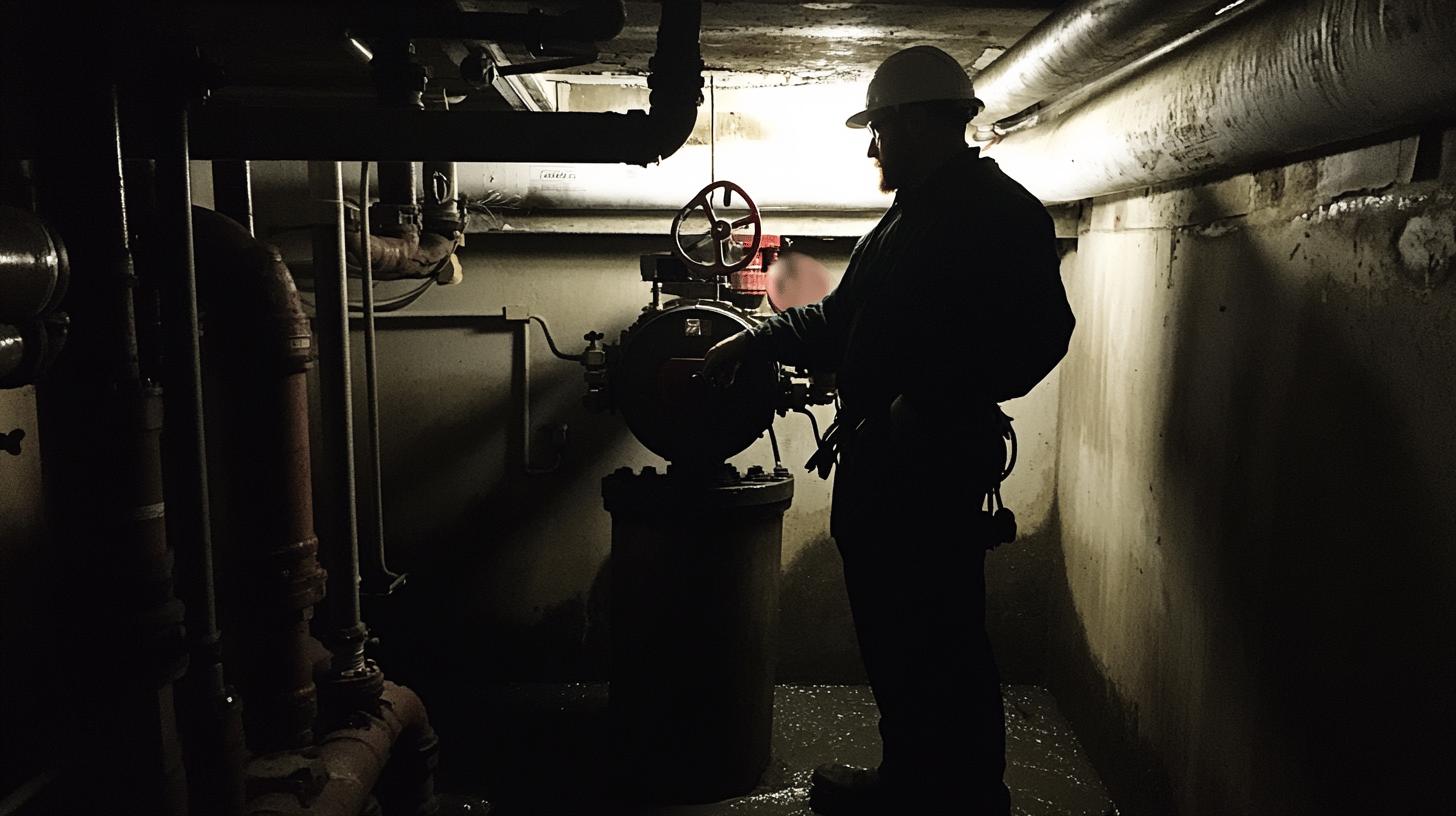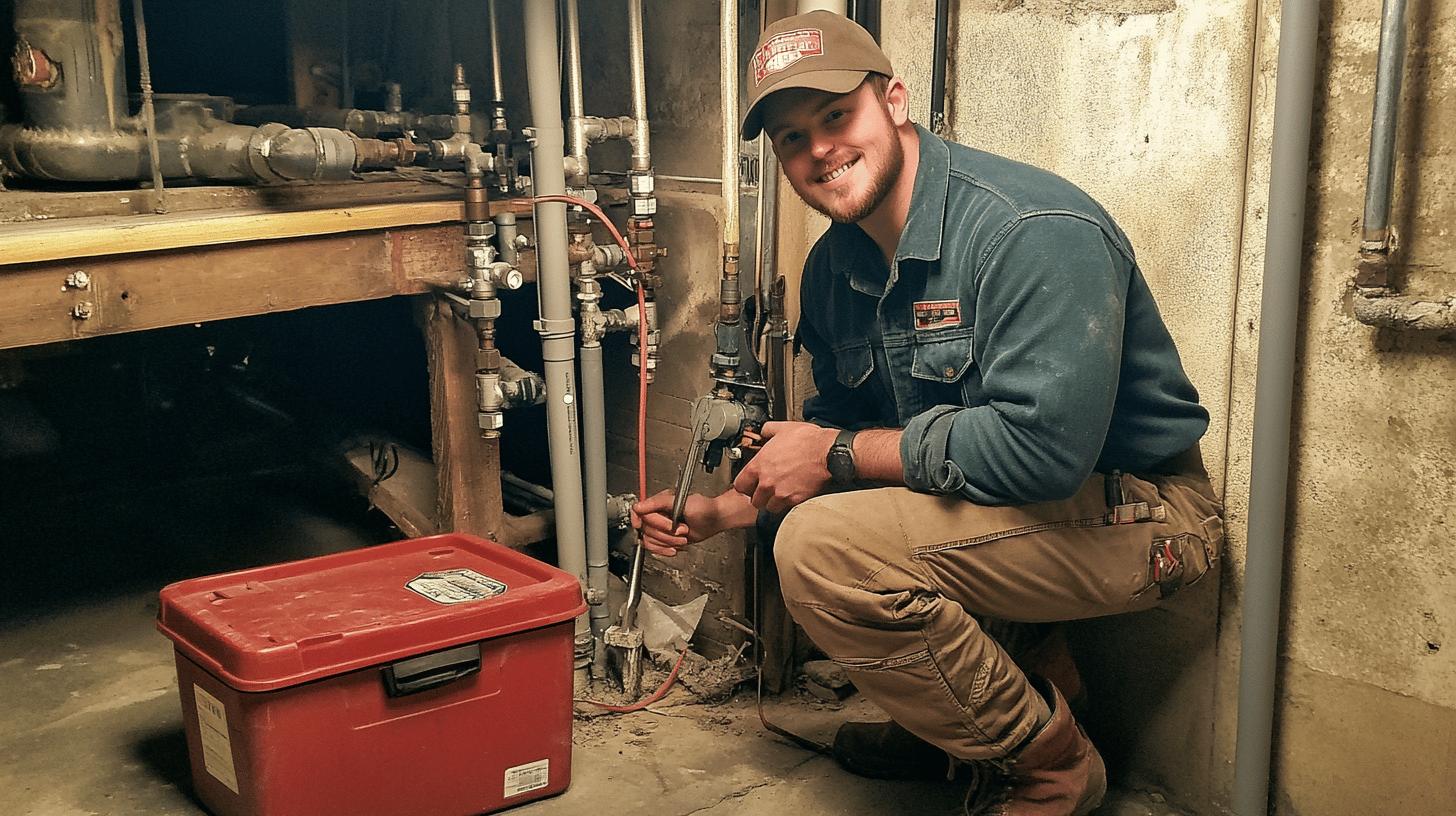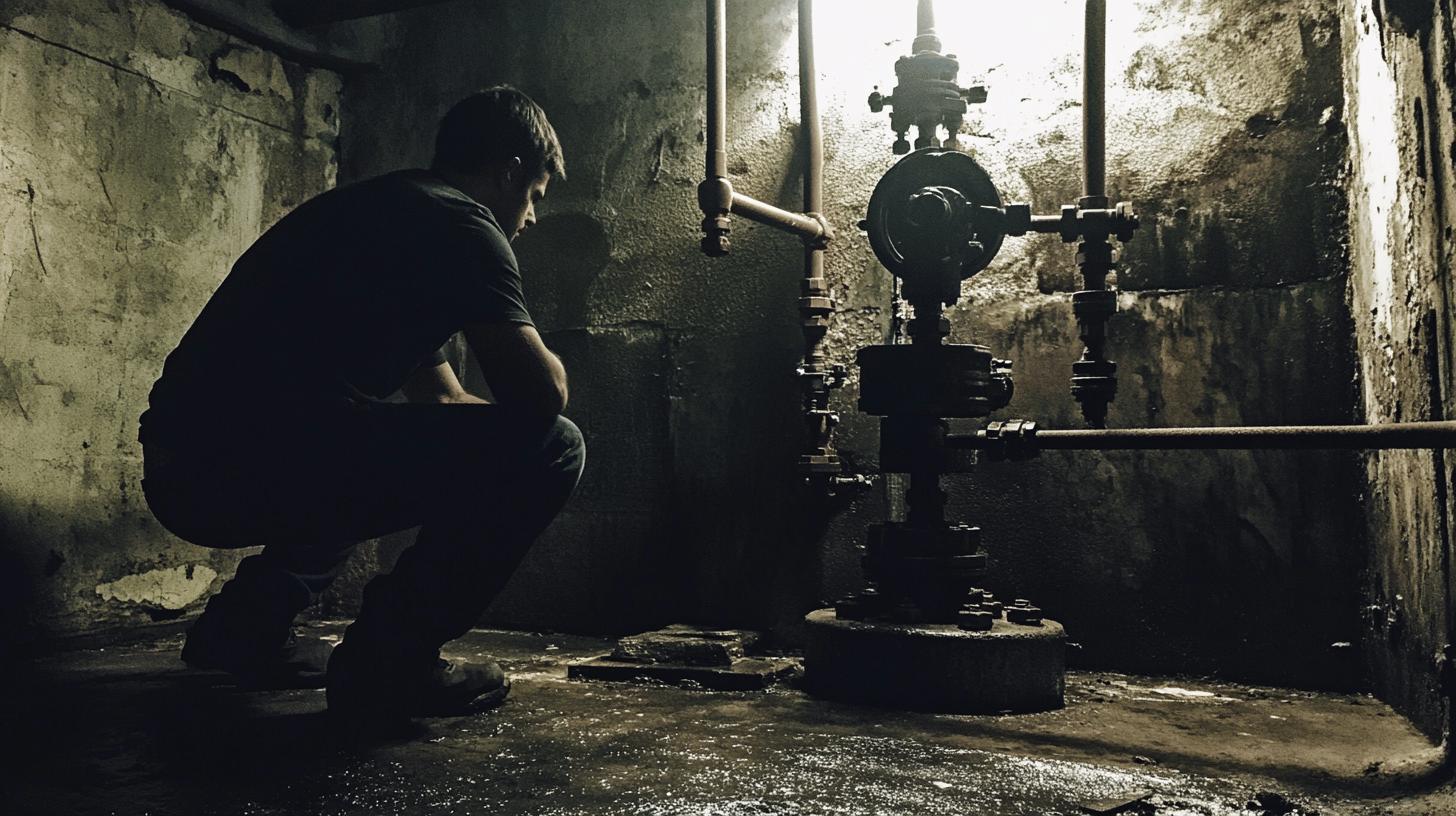TL;DR:
-
Types of Valves:
- Gate Valves: Turn clockwise multiple times to close; found on main lines.
- Ball Valves: Turn 90 degrees clockwise; lever handle indicates open (parallel) or closed (perpendicular).
-
Valve Locations:
- Main Shutoff Valve: Utility closet or basement.
- Fixture Valves: Beneath sinks/toilets; turn clockwise.
- Street Valves: Near street/sidewalk; may need long wrench.
-
Maintenance Tips:
-
Wear protective gloves, keep area dry, apply lubricant to stuck valves, bi-annual testing.
- Benefits of Professional Help:
- Expertise, specialized tools, complex repair handling, quality assurance.
Have you ever faced a plumbing emergency and struggled to turn off the water because you weren’t sure which way to twist the valve? Knowing the right direction to turn can save you from a small leak turning into a huge mess. This guide will help you understand the differences between gate and ball valves, along with simple instructions and diagrams for each type. With this knowledge, you’ll be ready to handle emergencies and protect your home from water damage. Let’s get into the details and arm you with this important info!
Understanding Which Direction to Turn Off Water Valves
Knowing how to turn off the water valves in your home is super important for maintenance and emergencies. Different types of valves need to be turned in different directions to shut off the water. If you can identify and operate these valves correctly, you can prevent water damage and keep your plumbing system safe. Let’s break down the two most common types: gate valves and ball valves, since each works a little differently.
Gate valves are often found on main water lines and require several clockwise turns to close. They have a round handle that you turn multiple times to completely stop the water flow. This type of valve controls water by raising or lowering a metal gate inside the pipe. It’s essential to remember that it takes multiple turns to shut it off fully, especially in an emergency.
Ball valves, on the other hand, have a lever handle that only needs to be turned 90 degrees clockwise to stop the water. These are popular in modern plumbing systems because they’re simple and reliable. You can easily see the position of the valve: if the lever is parallel to the pipe, it’s open; if it’s perpendicular, it’s closed. This straightforward operation makes ball valves easy to use, even if you’re not very familiar with plumbing.
How to Locate and Turn Off Different Water Valves

Finding the right water shut-off valve is super important for managing your home’s plumbing. The main shut-off valve is usually located where the water supply enters your house, which could be in a utility closet, basement, or near the front foundation wall. To turn off this valve, just find it and turn the handle clockwise until the water completely stops. This is key during emergencies and regular maintenance to prevent unnecessary water damage.
Individual fixture valves control the water flow to specific appliances like sinks, toilets, and washing machines. These valves are typically chrome and located directly beneath each fixture. For sinks and showers, you’ll usually find two valves: one for hot water and one for cold. Just turn them clockwise to stop the water. Toilets generally have a single valve near the base that also needs a clockwise turn to close.
Street valves control the water supply for your entire property and are typically found in a metal box near the street or sidewalk, often shared with the water meter. These valves can be deep and might need a long wrench to operate. To shut off the water, turn the valve clockwise until it’s perpendicular to the pipe. However, it’s best to contact your water company for permission and guidance before trying this.
A quick reference table can help you remember the location and tools needed for each valve type:
| Valve Type | Location | Tools Needed |
|——————–|——————————-|——————|
| Main Shutoff Valve | Utility closet or basement | None |
| Fixture Valve | Directly below the fixture | None |
| Street Valve | Metal box near street/sidewalk| Long wrench |
Safety Tips and Troubleshooting for Water Valve Issues
What if a water valve is stuck? To fix it, spray some lubricant like WD-40 to help loosen the valve. Then, gently turn it to relieve any resistance. Regular maintenance, such as testing and turning the valves every so often, can help prevent them from sticking in the first place. This keeps the internal parts moving smoothly and reduces the chances of corrosion or mineral buildup causing blockages.
How can you handle water valves safely? First, wear protective gloves to shield your hands, especially with older or metal valves that might have sharp edges. Also, keep the area around the valve dry to prevent slips or electrical hazards. If a valve is tough to turn, apply gentle pressure to avoid damaging it—using too much force can lead to breaks or leaks.
For regular maintenance, test your valves at least twice a year to ensure they’re working smoothly. This proactive approach can help you spot potential issues before they turn into big problems. And remember to apply lubricant when necessary to keep everything functioning well and extend the valve’s lifespan. Following these practices can help you avoid many valve-related issues and keep your plumbing in good shape.
- Wear protective gloves
- Keep area dry
- Use gentle pressure
- Apply lubricant for stuck valves
- Test valves bi-annually
The Role of Professional Plumbers in Water Valve Maintenance

Hiring professional plumbers for water valve maintenance and repairs is key to keeping your plumbing system reliable. These pros know how to handle any plumbing issue effectively. With their understanding of different valve types, they can quickly identify problems and fix or replace what’s needed. They also tackle urgent issues like pipe bursts to prevent serious water damage. For instance, Gold Medal Service is well-regarded for its plumbing and HVAC expertise and offers upfront pricing to avoid surprises.
So, why should you choose professionals instead of going the DIY route? Professional plumbers have specialized tools that make it easier to deal with complicated plumbing challenges. Their training and experience help them make precise repairs, which can reduce the chances of future problems. By hiring a professional, you ensure high quality and safety, giving you peace of mind that everything is done right.
- Expertise in identifying valve types
- Access to specialized tools
- Experience with complex repairs
- Assurance of quality and safety
Final Words
When it comes to household plumbing, knowing how to turn off the water valve is super important. For gate valves, you’ll need to turn them clockwise several times, while ball valves just need a quick 90-degree clockwise turn. It’s key to locate these valves—whether they’re main, fixture, or street valves—to manage your water supply effectively.
Staying safe and doing regular maintenance will help avoid problems like sticking valves. If you run into any issues, professional plumbers can provide reliable help to make sure everything is working as it should. By following these tips, you’ll be able to handle water valves with confidence, keeping your plumbing system running smoothly. This proactive approach helps keep your home safe and worry-free.
FAQ
Which Direction to Turn Off Water Valve?
To turn off a water valve, generally twist it clockwise. For gate valves, turn multiple times clockwise. For ball valves, rotate the lever handle 90 degrees clockwise.
How Do You Know if a Water Valve is Open or Closed?
A water valve is open if the handle aligns with the pipe and closed if it’s perpendicular. In gate valves, the wheel needs to be turned counterclockwise to open.
Which Way to Turn Off Water Valve at Street?
Turn the street water valve clockwise using a long wrench. These valves are usually found near the property line or under a utility box cover.
How to Turn Off Water Valve Outside?
Turn the outside water valve clockwise. Ensure you use appropriate tools for accessibility in outdoor conditions.
Which Way to Turn Off Water Valve on Toilet?
Turn the toilet water valve clockwise. It’s typically located just behind the toilet near the floor.
Which Direction to Turn Off Water Valve for Washing Machine?
Turn the washing machine water valve clockwise. Find these valves at the wall behind the appliance.
How Do You Twist to Turn Off Water?
Twist the valve clockwise to shut off water flow. This general rule applies for most types of water shut-off valves.
Safety Tips for Handling Water Valves
When handling water valves, wear protective gloves and keep the area dry. Use gentle pressure and apply lubricant like WD-40 for stuck valves. Test valves every six months.
Why Hire Professional Plumbers for Valve Maintenance?
Hiring professional plumbers ensures quality and safety in repairs. They have expertise in identifying valve types and access to specialized tools. Their experience minimizes complications from DIY solutions.

